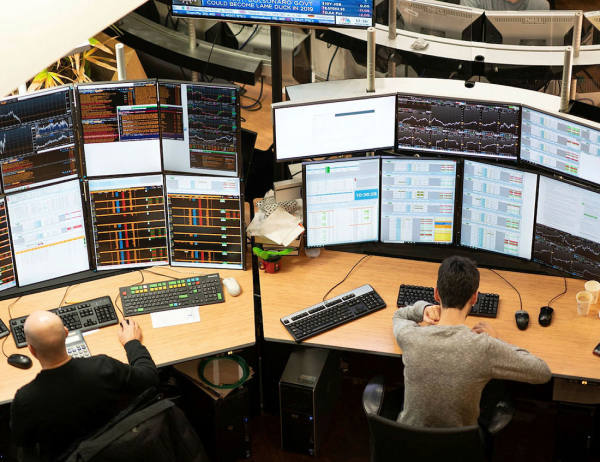December is meant to be a good time for UK equities. Be it a dearth of financial results, a lack of liquidity in the trading days around Christmas, or old-fashioned festive cheer, the so-called Santa Rally often finds the stock market in an optimistic mood, keen to end things with a party.
If that sounds like anecdotal rubbish, look at the FTSE All-Share’s history. Since 2005, the month has only finished down four times, thereby tying July for the most consistent 31-day window and April for the biggest average monthly gain (2.1 per cent).
This means that if the index finishes in the red this time, as current performance suggests it might, it would be at odds with recent history.
Personally, I find the pattern odd. For all the talk of renewed optimism and the pent-up energy of another year to come, year-ends invite reflection, which can lead to doubt. And investors know that January – a reliably bad month across most major markets – is just days away from beginning. If liquidity thins, it also makes sense to cover positions ahead of time.
Indeed, if my performance were being judged every 12-month period (as is the case for lots of investors) and knew things were looking good by around mid-December, I know my temptation would be to reduce risk before the end of the calendar year.
Beyond this very vibes-based schematic, December also finds pretty much everyone returning to the same set of end-of-year questions that have defined markets for a long time. At their core, this amounts to the same over-arching theme: will American exceptionalism continue?
In 2024, it certainly did. GDP probably ticked up 2.8 per cent, inflation dipped again, the S&P 500 rose another 28 per cent, and Treasury yields dipped despite another jump in the fiscal deficit.
Read more from Investors' Chronicle
A new screen hunting for super software stocks
Two AI stocks without the China trade war risk
How to figure out the house price cycle
But in 2025? This week, Rockefeller Capital’s chairman Ruchir Sharma laid his cards on the table, arguing that relative to all other options before investors, America now represents the mother of all bubbles. While a variation of this headline has featured in many year-end outlooks from the past decade, Sharma at least offers both a catalyst and a timeframe for his wager.
“More likely, by some point next year, investors will baulk and demand higher interest rates or a demonstration of fiscal discipline, triggered perhaps by an even larger deficit or ever bigger auctions of Treasuries,” he argues. Will bond vigilantes bring the new Trump administration to heel? And if so, will better ‘risk-free’ returns put a pin in the stock market’s “mania”, as Sharma describes it? If this happens, will equity allocations swing from America to elsewhere? If so, can it be easily absorbed?
Like most bearish scenarios, there is logic to Sharma’s hunch, even if the chain reactions that follow veer into hypotheticals. But then nor is his critique of American exceptionalism exhaustive. If Microsoft (US:MSFT) is essentially now leading a dogfight to buy as many Nvidia (US:NVDA) GPUs as possible, you have to wonder if investors are already double-counting AI’s addressable markets.
Anyway, it being late December, and with even this Ideas Farm column running short of ideas and time, I’m going to adopt the class fallback position and ask: what does Warren think?
If holdings within Berkshire Hathaway’s (US:BRK.B) insurance portfolio are an indicator (and what else would they be?) then we can safely say that Buffett now prefers short-term US government bonds and cash to US equities.
Clearly, the Sage of Omaha isn’t betting against America. Nor is he betting against everyone’s favourite stock market. But if the world’s best-known stockpicker can’t find stocks worth buying, then maybe the last few quiet days of December are a good time to put a bit more cash into those stocking fillers.





.png?source=invchron&width=600)
